摘要
本例提取了植物幼苗数据集中的部分数据做数据集,数据集共有 12 种类别,今天我和大家一起实现 tensorflow2.X 版本图像分类任务,分类的模型使用 EfficientNetB0。
通过这篇文章你可以学到:
1、如何加载图片数据,并处理数据。
2、如果将标签转为 onehot 编码
3、如何使用数据增强。
4、如何使用 mixup。
5、如何切分数据集。
6、如何加载预训练模型。
EfficientNet 简介
EfficientNet 是谷歌 2019 年提出的分类模型,自从提出以后这个模型,各大竞赛平台常常能看到他的身影,成了霸榜的神器。下图是 EfficientNet—B0 模型的网络结构。
从网络中可以看出,作者构建了 MBConv,结构如下图:
k 对应的卷积核的大小,经过 1×1 的卷积,然后 channel 放大 4 倍,再经过 depthwise conv3×3 的卷积,然后经过 SE 模块后,再经过 1×1 的卷积,把 channel 恢复到输入的大小,最后和上层的输入融合。
项目结构
EfficientNet_demo├─data│ ├─test│ └─train│ ├─Black-grass│ ├─Charlock│ ├─Cleavers│ ├─Common Chickweed│ ├─Common wheat│ ├─Fat Hen│ ├─Loose Silky-bent│ ├─Maize│ ├─Scentless Mayweed│ ├─Shepherds Purse│ ├─Small-flowered Cranesbill│ └─Sugar beet├─mixupgenerator.py├─train.py├─test1.py└─test.py
复制代码
训练
1、Mixup
mixup 是一种非常规的数据增强方法,一个和数据无关的简单数据增强原则,其以线性插值的方式来构建新的训练样本和标签。最终对标签的处理如下公式所示,这很简单但对于增强策略来说又很不一般。
(xi,yi),(xj,yj)两个数据对是原始数据集中的训练样本对(训练样本和其对应的标签)。其中λ是一个服从 B 分布的参数,λ∼Beta(α,α) 。Beta 分布的概率密度函数如下图所示,其中α∈[0,+∞]
因此α是一个超参数,随着α的增大,网络的训练误差就会增加,而其泛化能力会随之增强。而当α→∞时,模型就会退化成最原始的训练策略。参考:https://www.jianshu.com/p/d22fcd86f36d
新建 mixupgenerator.py,插入一下代码:
import numpy as np
class MixupGenerator(): def __init__(self, X_train, y_train, batch_size=32, alpha=0.2, shuffle=True, datagen=None): self.X_train = X_train self.y_train = y_train self.batch_size = batch_size self.alpha = alpha self.shuffle = shuffle self.sample_num = len(X_train) self.datagen = datagen
def __call__(self): while True: indexes = self.__get_exploration_order() itr_num = int(len(indexes) // (self.batch_size * 2))
for i in range(itr_num): batch_ids = indexes[i * self.batch_size * 2:(i + 1) * self.batch_size * 2] X, y = self.__data_generation(batch_ids)
yield X, y
def __get_exploration_order(self): indexes = np.arange(self.sample_num)
if self.shuffle: np.random.shuffle(indexes)
return indexes
def __data_generation(self, batch_ids): _, h, w, c = self.X_train.shape l = np.random.beta(self.alpha, self.alpha, self.batch_size) X_l = l.reshape(self.batch_size, 1, 1, 1) y_l = l.reshape(self.batch_size, 1)
X1 = self.X_train[batch_ids[:self.batch_size]] X2 = self.X_train[batch_ids[self.batch_size:]] X = X1 * X_l + X2 * (1 - X_l)
if self.datagen: for i in range(self.batch_size): X[i] = self.datagen.random_transform(X[i]) X[i] = self.datagen.standardize(X[i])
if isinstance(self.y_train, list): y = []
for y_train_ in self.y_train: y1 = y_train_[batch_ids[:self.batch_size]] y2 = y_train_[batch_ids[self.batch_size:]] y.append(y1 * y_l + y2 * (1 - y_l)) else: y1 = self.y_train[batch_ids[:self.batch_size]] y2 = self.y_train[batch_ids[self.batch_size:]] y = y1 * y_l + y2 * (1 - y_l)
return X, y
复制代码
2、 导入需要的数据包,设置全局参数
import osimport pickleimport cv2import numpy as npfrom sklearn.metrics import classification_reportfrom sklearn.model_selection import train_test_splitfrom sklearn.preprocessing import LabelBinarizerfrom tensorflow.keras.applications import EfficientNetB0from tensorflow.keras.optimizers import Adamfrom tensorflow.keras.preprocessing.image import img_to_arrayfrom tensorflow.python.keras.callbacks import ModelCheckpoint, ReduceLROnPlateaufrom tensorflow.python.keras.layers import Densefrom tensorflow.python.keras.models import Sequential
from mixupgenerator import MixupGenerator
norm_size = 224datapath = 'data/train'EPOCHS = 100INIT_LR = 3e-4labelList = []classnum = 12batch_size = 16
复制代码
这里可以看出 tensorflow2.0 以上的版本集成了 Keras,我们在使用的时候就不必单独安装 Keras 了,以前的代码升级到 tensorflow2.0 以上的版本将 keras 前面加上 tensorflow 即可。
tensorflow 说完了,再说明一下几个重要的全局参数:
norm_size = 224 ,EfficientNetB0 默认的图片尺寸是 224×224。
datapath = 'data/train', 设置图片存放的路径,在这里要说明一下如果图片很多,一定不要放在工程目录下,否则 Pycharm 加载工程的时候会浏览所有的图片,很慢很慢。
EPOCHS = 300, epochs 的数量,关于 epoch 的设置多少合适,这个问题很纠结,一般情况设置 300 足够了,如果感觉没有训练好,再载入模型训练。
INIT_LR = 3e-4,学习率,一般情况从 0.001 开始逐渐降低,也别太小了到 1e-6 就可以了。
classnum = 12, 类别数量,数据集有 12 个类别,所有就定义 12 类。
batch_size = 16,batchsize,根据硬件的情况和数据集的大小设置,太小了 loss 浮动太大,太大了收敛不好,根据经验来,一般设置为 2 的次方。windows 可以通过任务管理器查看显存的占用情况。
Ubuntu 可以使用 nvidia-smi 查看显存的占用。
3、 加载图片
处理图像的步骤:
读取图像
用指定的大小去 resize 图像。
将图像转为数组
图像归一化
使用 LabelBinarizer 将标签转为 onehot 编码.
具体做法详见代码:
def loadImageData(): imageList = [] listClasses = os.listdir(datapath)# 类别文件夹 for class_name in listClasses: class_path=os.path.join(datapath,class_name) image_names=os.listdir(class_path) for image_name in image_names: image_full_path = os.path.join(class_path, image_name) labelList.append(class_name) image = cv2.imdecode(np.fromfile(image_full_path, dtype=np.uint8), -1) image = cv2.resize(image, (norm_size, norm_size), interpolation=cv2.INTER_LANCZOS4) if image.shape[2] >3: image=image[:,:,:3] print(image.shape) image = img_to_array(image) imageList.append(image) imageList = np.array(imageList) / 255.0 return imageList
print("开始加载数据")imageArr = loadImageData()print("加载数据完成")print(labelList)lb = LabelBinarizer()labelList = lb.fit_transform(labelList)print(labelList)print(lb.classes_)f = open('label_bin.pickle', "wb")f.write(pickle.dumps(lb))f.close()
复制代码
做好数据之后,我们需要切分训练集和测试集,一般按照 4:1 或者 7:3 的比例来切分。切分数据集使用 train_test_split()方法,需要导入 from sklearn.model_selection import train_test_split 包。例:
trainX, valX, trainY, valY = train_test_split(imageArr, labelList, test_size=0.2, random_state=42)
复制代码
4、图像增强
ImageDataGenerator()是 keras.preprocessing.image 模块中的图片生成器,同时也可以在 batch 中对数据进行增强,扩充数据集大小,增强模型的泛化能力。比如进行旋转,变形,归一化等等。
keras.preprocessing.image.ImageDataGenerator(featurewise_center=False,samplewise_center=False, featurewise_std_normalization=False, samplewise_std_normalization=False,zca_whitening=False, zca_epsilon=1e-06, rotation_range=0.0, width_shift_range=0.0, height_shift_range=0.0,brightness_range=None, shear_range=0.0, zoom_range=0.0,channel_shift_range=0.0, fill_mode='nearest', cval=0.0, horizontal_flip=False, vertical_flip=False, rescale=None, preprocessing_function=None,data_format=None,validation_split=0.0)
复制代码
参数:
featurewise_center: Boolean. 对输入的图片每个通道减去每个通道对应均值。
samplewise_center: Boolan. 每张图片减去样本均值, 使得每个样本均值为 0。
featurewise_std_normalization(): Boolean()
samplewise_std_normalization(): Boolean()
zca_epsilon(): Default 12-6
zca_whitening: Boolean. 去除样本之间的相关性
rotation_range(): 旋转范围
width_shift_range(): 水平平移范围
height_shift_range(): 垂直平移范围
shear_range(): float, 透视变换的范围
zoom_range(): 缩放范围
fill_mode: 填充模式, constant, nearest, reflect
cval: fill_mode == 'constant'的时候填充值
horizontal_flip(): 水平反转
vertical_flip(): 垂直翻转
preprocessing_function(): user 提供的处理函数
data_format(): channels_first 或者 channels_last
validation_split(): 多少数据用于验证集
本例使用的图像增强代码如下:
from tensorflow.keras.preprocessing.image import ImageDataGenerator
train_datagen = ImageDataGenerator( rotation_range=20, width_shift_range=0.2, height_shift_range=0.2, horizontal_flip=True)val_datagen = ImageDataGenerator() # 验证集不做图片增强training_generator_mix = MixupGenerator(trainX, trainY, batch_size=batch_size, alpha=0.2, datagen=train_datagen)()val_generator = val_datagen.flow(valX, valY, batch_size=batch_size, shuffle=True)
复制代码
注意:只在训练集上做增强,不在验证集上做增强。
5、 保留最好的模型和动态设置学习率
ModelCheckpoint:用来保存成绩最好的模型。
语法如下:
keras.callbacks.ModelCheckpoint(filepath, monitor='val_loss', verbose=0, save_best_only=False, save_weights_only=False, mode='auto', period=1)
复制代码
该回调函数将在每个 epoch 后保存模型到 filepath
filepath 可以是格式化的字符串,里面的占位符将会被 epoch 值和传入 on_epoch_end 的 logs 关键字所填入
例如,filepath 若为 weights.{epoch:02d-{val_loss:.2f}}.hdf5,则会生成对应 epoch 和验证集 loss 的多个文件。
参数
filename:字符串,保存模型的路径
monitor:需要监视的值
verbose:信息展示模式,0 或 1
save_best_only:当设置为 True 时,将只保存在验证集上性能最好的模型
mode:‘auto’,‘min’,‘max’之一,在 save_best_only=True 时决定性能最佳模型的评判准则,例如,当监测值为 val_acc 时,模式应为 max,当检测值为 val_loss 时,模式应为 min。在 auto 模式下,评价准则由被监测值的名字自动推断。
save_weights_only:若设置为 True,则只保存模型权重,否则将保存整个模型(包括模型结构,配置信息等)
period:CheckPoint 之间的间隔的 epoch 数
ReduceLROnPlateau:当评价指标不在提升时,减少学习率,语法如下:
keras.callbacks.ReduceLROnPlateau(monitor='val_loss', factor=0.1, patience=10, verbose=0, mode='auto', epsilon=0.0001, cooldown=0, min_lr=0)
复制代码
当学习停滞时,减少 2 倍或 10 倍的学习率常常能获得较好的效果。该回调函数检测指标的情况,如果在 patience 个 epoch 中看不到模型性能提升,则减少学习率
参数
monitor:被监测的量
factor:每次减少学习率的因子,学习率将以 lr = lr*factor 的形式被减少
patience:当 patience 个 epoch 过去而模型性能不提升时,学习率减少的动作会被触发
mode:‘auto’,‘min’,‘max’之一,在 min 模式下,如果检测值触发学习率减少。在 max 模式下,当检测值不再上升则触发学习率减少。
epsilon:阈值,用来确定是否进入检测值的“平原区”
cooldown:学习率减少后,会经过 cooldown 个 epoch 才重新进行正常操作
min_lr:学习率的下限
本例代码如下:
checkpointer = ModelCheckpoint(filepath='best_model.hdf5', monitor='val_accuracy', verbose=1, save_best_only=True, mode='max')
reduce = ReduceLROnPlateau(monitor='val_accuracy', patience=10, verbose=1, factor=0.5, min_lr=1e-6)
复制代码
6、建立模型并训练
model = Sequential()model.add(EfficientNetB0(input_shape=(224, 224, 3), include_top=False, pooling='avg', weights='imagenet'))model.add(Dense(classnum, activation='softmax'))model.summary()optimizer = Adam(learning_rate=INIT_LR)model.compile(optimizer=optimizer, loss='categorical_crossentropy', metrics=['accuracy'])
history = model.fit(training_generator_mix, steps_per_epoch=trainX.shape[0] / batch_size, validation_data=val_generator, epochs=EPOCHS, validation_steps=valX.shape[0] / batch_size, callbacks=[checkpointer, reduce])model.save('my_model.h5')
复制代码
运行结果:
训练了 100 个 epoch,准确率已经过达到了 0.94。
7、模型评估
使用 classification_report 对验证集做评估,导入包 from sklearn.metrics import classification_report
predictions = model.predict(x=valX, batch_size=16)print(classification_report(valY.argmax(axis=1), predictions.argmax(axis=1), target_names=lb.classes_))
复制代码
运行结果如下:
8、保留训练结果,并将其生成图片
loss_trend_graph_path = r"WW_loss.jpg"acc_trend_graph_path = r"WW_acc.jpg"import matplotlib.pyplot as plt
print("Now,we start drawing the loss and acc trends graph...")# summarize history for accuracyfig = plt.figure(1)plt.plot(history.history["accuracy"])plt.plot(history.history["val_accuracy"])plt.title("Model accuracy")plt.ylabel("accuracy")plt.xlabel("epoch")plt.legend(["train", "test"], loc="upper left")plt.savefig(acc_trend_graph_path)plt.close(1)# summarize history for lossfig = plt.figure(2)plt.plot(history.history["loss"])plt.plot(history.history["val_loss"])plt.title("Model loss")plt.ylabel("loss")plt.xlabel("epoch")plt.legend(["train", "test"], loc="upper left")plt.savefig(loss_trend_graph_path)plt.close(2)print("We are done, everything seems OK...")# #windows系统设置10关机#os.system("shutdown -s -t 10")
复制代码
结果:
测试部分
单张图片预测
1、导入依赖
import pickleimport cv2import numpy as npfrom tensorflow.keras.preprocessing.image import img_to_arrayfrom tensorflow.keras.models import load_modelimport time
复制代码
2、设置全局参数
这里注意,字典的顺序和训练时的顺序保持一致
norm_size=224imagelist=[]emotion_labels = { 0: 'Black-grass', 1: 'Charlock', 2: 'Cleavers', 3: 'Common Chickweed', 4: 'Common wheat', 5: 'Fat Hen', 6: 'Loose Silky-bent', 7: 'Maize', 8: 'Scentless Mayweed', 9: 'Shepherds Purse', 10: 'Small-flowered Cranesbill', 11: 'Sugar beet',}
复制代码
3、加载模型
这里要加载两个模型,一个是 LabelBinarizer 模型,一个是 MobileNetV3Large 模型。
emotion_classifier=load_model("best_model.hdf5")lb = pickle.loads(open("label_bin.pickle", "rb").read())t1=time.time()
复制代码
4、处理图片
处理图片的逻辑和训练集也类似,步骤:
image = cv2.imdecode(np.fromfile('data/test/0a64e3e6c.png', dtype=np.uint8), -1)# load the image, pre-process it, and store it in the data listimage = cv2.resize(image, (norm_size, norm_size), interpolation=cv2.INTER_LANCZOS4)image = img_to_array(image)imagelist.append(image)imageList = np.array(imagelist, dtype="float") / 255.0
复制代码
5、预测类别
预测类别,并获取最高类别的 index。
out=emotion_classifier.predict(imageList)print(out)pre=np.argmax(out)label = lb.classes_[pre]t2=time.time()print(label)t3=t2-t1print(t3)
复制代码
运行结果:
批量预测
批量预测和单张预测的差别主要在读取数据上,以及预测完成后,对预测类别的处理。其他的没有变化。
步骤:
加载模型。
定义测试集的目录
获取目录下的图片
循环循环图片
读取图片
resize 图片
转数组
放到 imageList 中
缩放到 0 到 255.
预测
emotion_classifier=load_model("best_model.hdf5")lb = pickle.loads(open("label_bin.pickle", "rb").read())t1=time.time()predict_dir = 'data/test'test11 = os.listdir(predict_dir)for file in test11: filepath=os.path.join(predict_dir,file)
image = cv2.imdecode(np.fromfile(filepath, dtype=np.uint8), -1) # load the image, pre-process it, and store it in the data list image = cv2.resize(image, (norm_size, norm_size), interpolation=cv2.INTER_LANCZOS4) image = img_to_array(image) imagelist.append(image)imageList = np.array(imagelist, dtype="float") / 255.0out = emotion_classifier.predict(imageList)print(out)pre = [np.argmax(i) for i in out]class_name_list=[lb.classes_[i] for i in pre]print(class_name_list)t2 = time.time()t3 = t2 - t1print(t3)
复制代码
运行结果:
完整代码:https://download.csdn.net/download/hhhhhhhhhhwwwwwwwwww/79581688
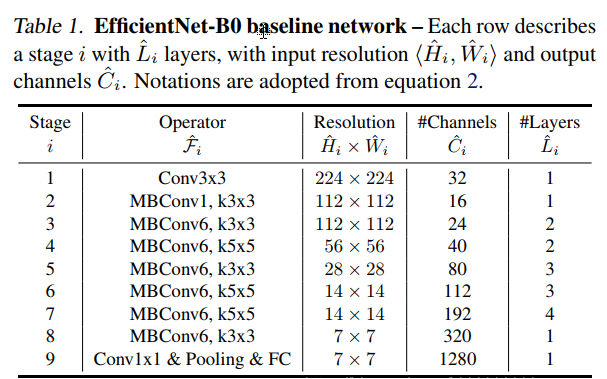
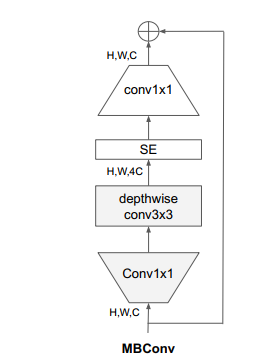
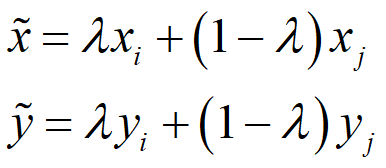
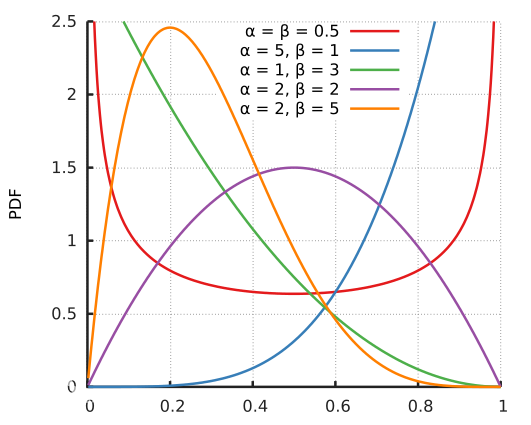

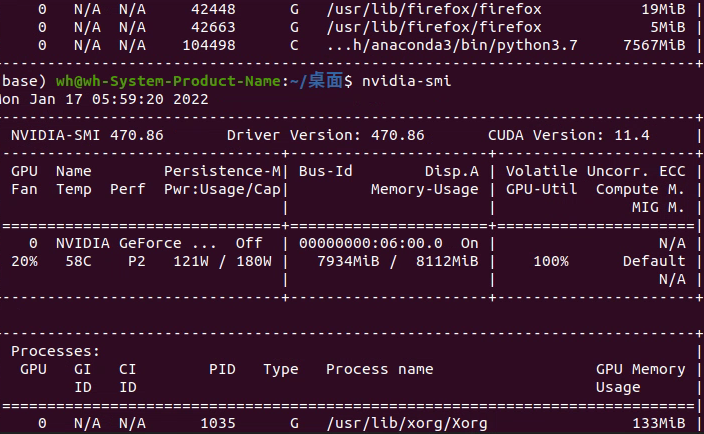


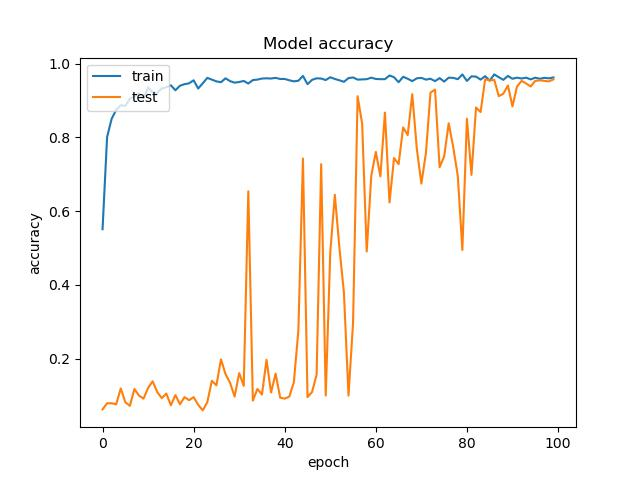
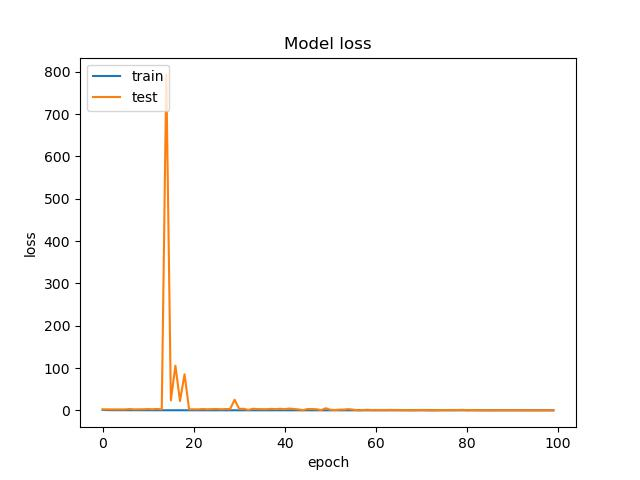
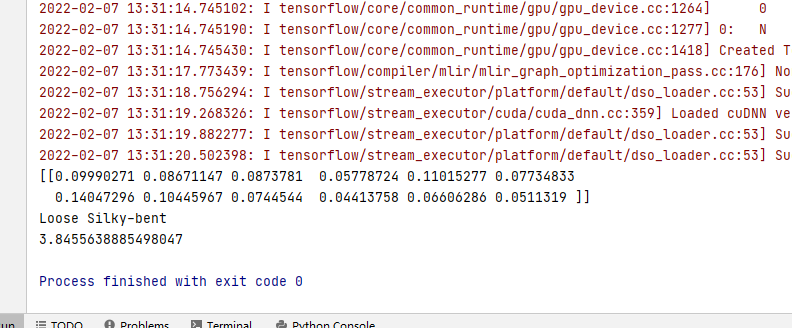
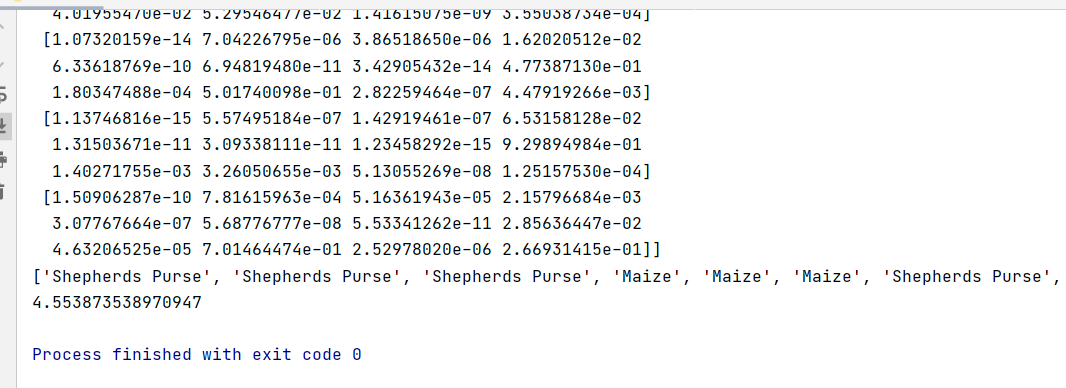











评论